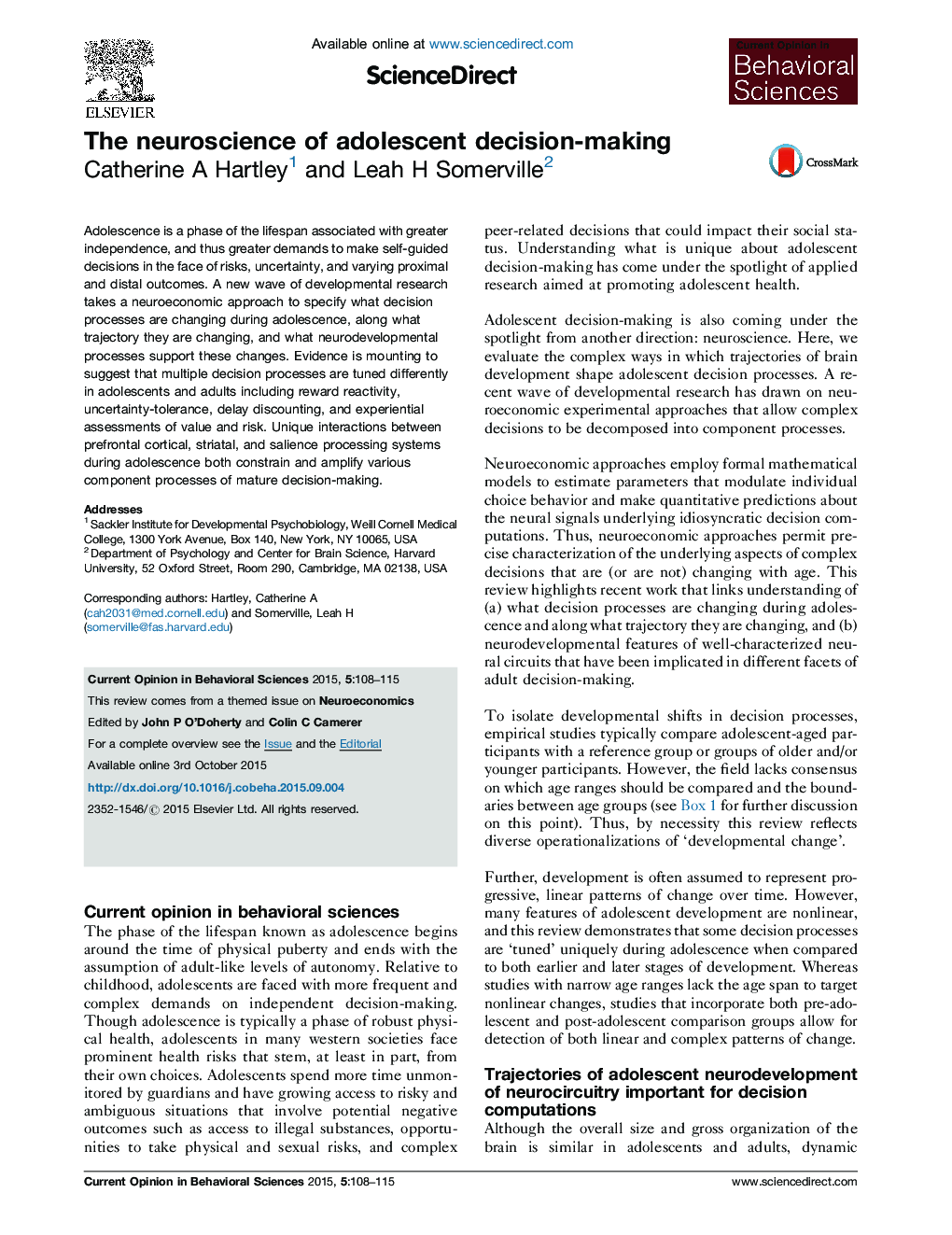| Article ID | Journal | Published Year | Pages | File Type |
|---|---|---|---|---|
| 6260859 | Current Opinion in Behavioral Sciences | 2015 | 8 Pages |
â¢We examine how trajectories of brain development shape adolescent decision processes.â¢Prolonged prefrontal development may constrain multiple component processes of choice.â¢Adolescent-specific peaks in incentive processing uniquely alter decision-computations.â¢Adolescent decision-making may be optimized for attaining specific developmental goals.
Adolescence is a phase of the lifespan associated with greater independence, and thus greater demands to make self-guided decisions in the face of risks, uncertainty, and varying proximal and distal outcomes. A new wave of developmental research takes a neuroeconomic approach to specify what decision processes are changing during adolescence, along what trajectory they are changing, and what neurodevelopmental processes support these changes. Evidence is mounting to suggest that multiple decision processes are tuned differently in adolescents and adults including reward reactivity, uncertainty-tolerance, delay discounting, and experiential assessments of value and risk. Unique interactions between prefrontal cortical, striatal, and salience processing systems during adolescence both constrain and amplify various component processes of mature decision-making.
